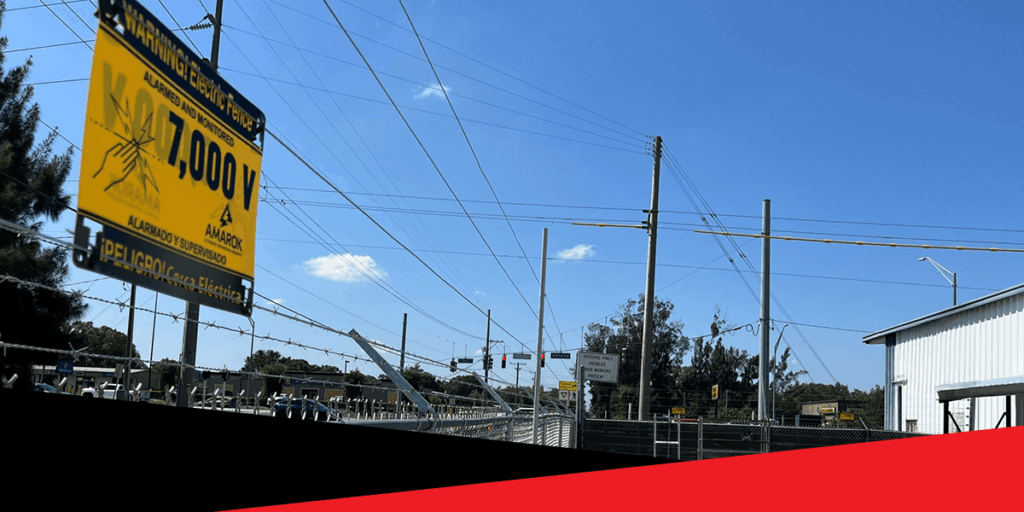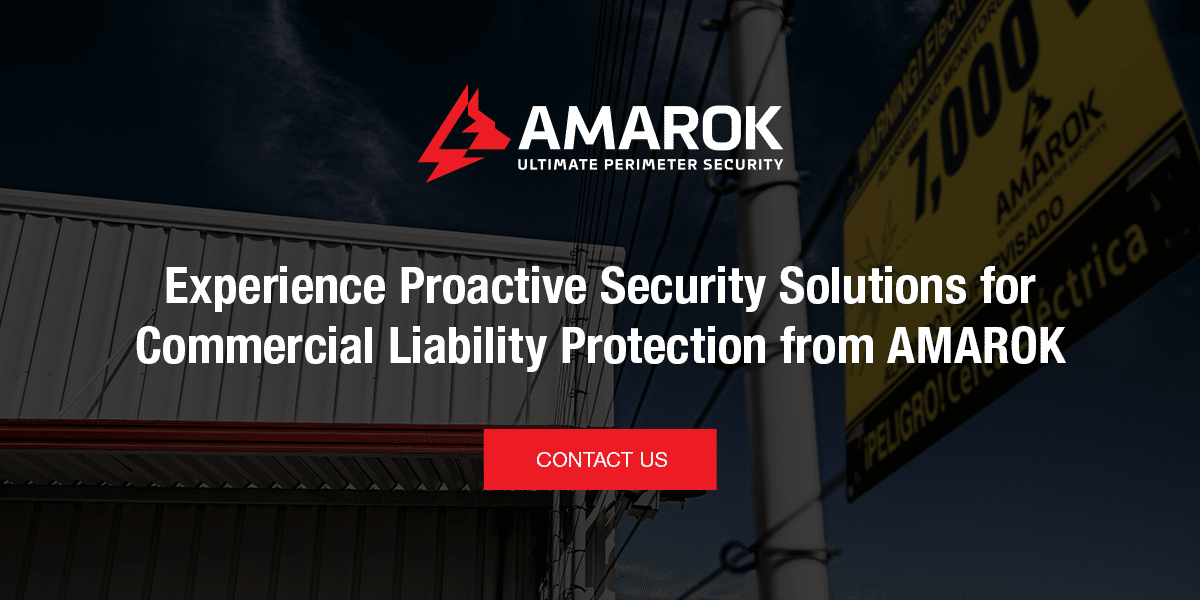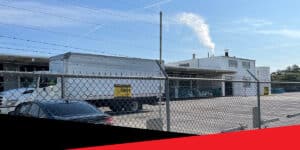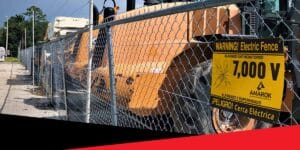The U.S. is known for having a litigious culture. This fact can create anxiety for business owners, with many concerned that they could face lawsuits if someone breaks in and gets hurt. The financial and operational disruptions from potential lawsuits due to injuries on commercial property can devastate even the most successful organization.
Understanding commercial property liability is crucial for protecting your business from these claims, as ignorance of liability laws offers no defense in court. This article explores the cost of commercial property liability claims, the role of commercial property insurance coverage, and how proactive security measures could protect your company from costly claims.
What Is Commercial Property Liability?
Commercial property liability refers to the legal responsibility property owners bear for injuries occurring on their premises. Under premises liability law, property owners must maintain reasonably safe conditions for various categories of visitors. This duty extends beyond obvious hazards, including protection from criminal acts in certain circumstances.
Common premises liability cases include:
- Slip and fall accidents
- Inadequate property maintenance leading to injury
- Falling objects striking visitors
- Insufficient security resulting in assault or theft
- Inadequate lighting causing accidents or enabling crime
- Dog bites and animal attacks
- Injuries from defective equipment or structures
The legal principle of duty of care determines owner responsibilities based on visitor classification. Property owners owe the highest duty to invitees, including customers and business visitors. This duty requires regular inspections for hazards, prompt repairs of dangerous conditions, and adequate risk warnings. Licensees, such as delivery personnel or social guests, receive reasonable care but less stringent protections.
Trespassers traditionally receive minimal legal protection, though this varies by state. Some jurisdictions extend the duty of care to anyone entering the property, while others strictly limit trespasser rights.
The attractive nuisance doctrine creates an essential exception for any business that welcomes children. This doctrine recognizes that children cannot appreciate certain dangers and holds property owners responsible for securing hazardous conditions that might attract curious children. Construction equipment, abandoned vehicles, unfenced pools, and industrial machinery exemplify attractive nuisances requiring special precautions.
The Cost of Liability Claims
Premises liability verdicts impose staggering financial burdens on businesses, including:
- Damages: Settlements vary significantly depending on the incident, such as slip-and-fall, negligent security, pool accidents, medical expenses, long-term care needs, and the property owner’s failure to address known hazards, but they can range from tens of thousands to millions.
- Legal defense: Mounting a legal defense comes with substantial expenses. Civil litigation attorneys and expert witnesses charge high fees. Each document review, deposition, and court appearance generates significant billable hours. Some cases go on for years, draining resources from core business operations.
- Operational costs: Liability cases can impact business operations in many ways. Certain areas of your premises could be shut down to prevent further harm or injury to others. Staff could be required to testify, impacting their productivity and overall business continuity.
Even frivolous lawsuits inflict significant damage. Defending baseless claims still requires full legal representation and court proceedings. Insurance companies frequently push settlements to avoid trial expenses, forcing business owners to choose between prolonged litigation costs and paying undeserved settlements. Both options damage financial bottom lines and potentially encourage future claims.
The Role of Commercial Property Insurance and Liability Coverage
Commercial property insurance protects physical assets against damage from fire, theft, vandalism, and natural disasters. However, property insurance alone does not protect against liability claims. Commercial property and liability insurance combines property coverage with liability protection. It covers legal defense costs, medical expenses, and damages from injury claims.
Commercial property insurance coverage varies between policies:
- Standard general liability policies address most premises liability situations, but contain essential limitations.
- Deductibles require businesses to pay initial claim costs.
- Coverage caps mean excess judgments are the business’s responsibility.
- Policy exclusions eliminate coverage for specific incidents.
Insurance cannot prevent the operational disruptions caused by litigation. Claims trigger premium increases that persist for years. Multiple claims may result in policy cancellation, leaving businesses uninsurable. A damaged reputation and lost business during litigation create unrecoverable losses beyond insurance coverage.
To achieve greater liability protection, it’s essential to take preventive measures in addition to holding commercial property insurance coverage to eliminate hazards and prevent unauthorized access. Eliminating hazards reduces the risk of claims before they can occur. Documented security protocols also strengthen legal defenses by demonstrating reasonable care standards.
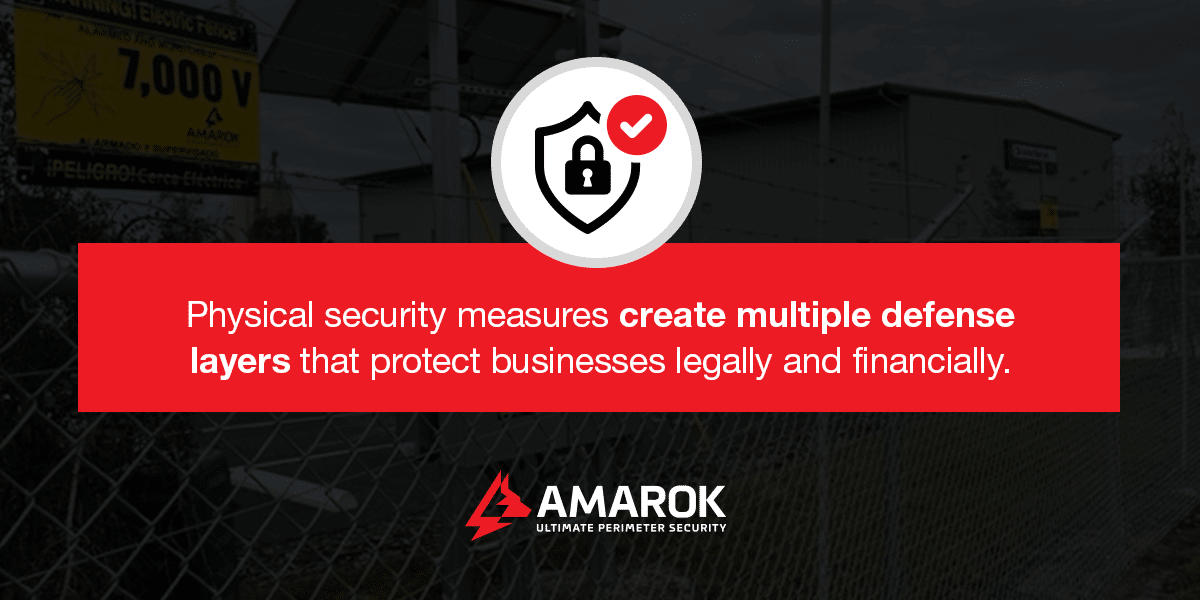
How Proactive Security Mitigates Commercial Property Liability
The most effective liability management strategy is one that prevents incidents. Stopping unauthorized individuals from entering your property eliminates opportunities for liability claims to arise. Physical security measures create multiple defense layers that protect businesses legally and financially.
Proactive security investments effectively “buy down” liability risks. Most courts recognize comprehensive security measures as evidence of reasonable care, strengthening defenses against remaining claims. Preventing access helps reduce the risk of injuries and the lawsuits that follow.
Consider implementing the following perimeter security solutions:
Electric Fence With Warning Signs
Electric fencing creates an imposing physical barrier that stops intruders at property boundaries. The Electric Guard Dog™ Fence delivers a medically safe but memorable shock if a would-be intruder attempts to tamper with it, preventing entry attempts before they can progress to actual trespass.
In addition, visible warning signs deter potential intruders while establishing legal notice of security measures. Most courts recognize proper signage as evidence that property owners took reasonable precautions, reducing liability exposure if someone ignores the warnings.
Video Surveillance Cameras and Remote Monitoring
Surveillance cameras provide essential video evidence that protects against false claims while helping security personnel identify genuine threats. Strategically placed cameras around perimeters, parking lots, loading docks, and restricted areas eliminate blind spots where incidents might occur unobserved.
Remote monitoring capabilities enable real-time threat detection and response. Security professionals can verify whether fence alarms indicate genuine intrusion attempts. This verification prevents unnecessary emergency responses while ensuring confirmed threats receive immediate attention.
Surveillance footage provides irrefutable evidence for future liability disputes. Video documentation can reveal whether claimed injuries occurred, how they happened, and whether property conditions contributed to the incident. This evidence is valuable against fraudulent claims, which account for significant insurance costs across industries.
Hazard Reduction With Adequate Lighting
Strategic lighting eliminates conditions that enable accidents and crime to occur. Darkness conceals hazards that can cause slip and fall injuries while providing cover for criminal activity. Proper illumination both protects legitimate visitors and deters unauthorized intrusions.
Alarm-based perimeter lighting activates if a criminal attempts to breach your electric fence, flooding the area with light. The sudden activation of bright lights typically encourages intruders to flee while alerting security personnel to the incident.
Additional lighting throughout your facility or site helps address interior hazards that could injure employees or authorized visitors. Well-lit pathways, stairs, and work areas help prevent accidents that may result in liability claims. In addition, documentation of lighting maintenance and repairs shows an ongoing commitment to safety, supporting reasonable care defenses.
Experience Proactive Security Solutions for Commercial Liability Protection from AMAROK
Commercial property liability is a reasonable concern for any business owner. While commercial property and liability insurance is essential, preventing incidents from occurring in the first place ensures protection. A multi-layered security system that combines perimeter protection, video surveillance, and strategic lighting is your ultimate defense against liability exposure.
AMAROK is a leading provider of proactive perimeter security solutions tailored to meet the specific needs of businesses across diverse industries. The Electric Guard Dog™ Fence prevents 99% of external theft after installation, preventing liability risks in the process. Get a unified security system that insurance companies recognize as reasonable prevention measures.
Protect your property, staff, assets, and peace of mind with AMAROK. Request a free threat assessment to get started today.
